An Emotion Regulation Course Designed for Parents
Course DesignThe course blends mindfulness, emotion regulation, attachment theory, and brain-based parenting, and it's designed for all parents, irrespective of your children's age. There are 6 lessons and 1 guided sleep meditation. Each lesson is approximately 20 minutes in duration, and includes: - a brief informative lesson - an emotion regulation strategy - a guided practice (meditation) - a home practice suggestion Course Outline
Parenthood can be tough. And when things get tough, we can all use a bit of help. This course is about developing a healthy habit with emotion regulation so that you can handle the tough moments that come your way - it’s about rejuvenating you, the parent - so that you can re-discover, re-energize, and re-centre in the present moment.
When we approach the day with mindful awareness and the ability to settle strong emotion when it bubbles up, we are more present with others and experience greater ease in bravely showing up as our authentic self. If this sounds interesting to you, please give the course a go! Learn more and sign up for the course on the Insight Timer app, at A Heart-Centered Reset for Tired Parents
0 Comments
 2022 Update: Now on Audio! (Click Here to Access) I have so much praise for The Whole-Brain Child, written by Daniel Siegel and Tina Bryson. The book explains brain growth and brain functioning in children, and ways parents can interact during difficult moments based on understanding neurobiology. There is minimal psychological jargon, and even includes strategies for parents to teach their children about their growing brains! Something that stood out for me near the beginning of the book, was Siegel’s explanation of mental wellness and unwellness. Please note: my overview pales in comparison to the explanation provided by Siegel – this book is worth the read! In order to explain these concepts, Siegel uses the analogy of paddling down a river in a canoe. Imagine, just paddling down the river in a canoe. As you stay in the center of the river, the waters are calm. However, toward each river bank, the waters become choppy. To one side of the river, the river bank represents chaos. To the other, rigidity. Floating down the center of the river represents mental wellness. Yet, in everyone’s life, there are times when our canoe floats towards the river banks. If your canoe were to float to close to chaos, you would feel out of control, confused, and in constant chaos and turmoil. If you float too close to rigidity, you would begin to impose control on everything and everyone around you. On the bank of rigidity, people become unwilling to adapt, unwilling to compromise, and unwilling to negotiate. Our thinking can be flexible and adaptable, and our emotions accurate for the situation when we are in center of the river. Siegel goes on to describe the analogy in much more detail, explaining how all mental illnesses can fit into either the bank of chaos or the bank or rigidity. Imagine how you could use the canoe analogy in your life. For example, after a hard day of work, likely feeling emotionally drained and stressed out – start noticing which shore your canoe is veering toward. Do you tend to float more toward chaos, or rigidity? When under stress, if you veer more toward chaos, you might experience a sense of losing control, or helplessness. You might experience yourself cycling through many strong emotions, such as anger, sadness, and anxiety. You may even catch yourself yelling, whining, or on the brink of tears. When under stress, if your canoe floats more toward rigidity, you might experiencing yourself as the task master, acting in a demanding manner and trying to control everything and everyone around you. When they don’t comply, the resulting behaviour might be anger, or anxiety. Using the image of the canoe, notice when your canoe is getting off track and visualize steering yourself back to centre. Be gentle with yourself and use positive words to self, such as “I choose to keep my canoe in the center”. And when it starts to go sideways (as things often do!), take a break: try taking a moment to breathe, and to visualize your canoe moving back to center. It’s a powerful image – and I am grateful once again to Daniel Siegel for his powerful contributions to brain-based parenting. Listen to the Guided Audio on Insight Timer: Navigating your River of Well-being Reference: The Whole-Brain Child: 12 Revolutionary Strategies to Nurture your Child’s Developing Mind. By Daniel Siegel and Tina Bryson. This article was originally posted on September 7, 2013, to Happy Parents = Happy Kids (focusedonparenting.wordpress.com) by Susan Guttridge 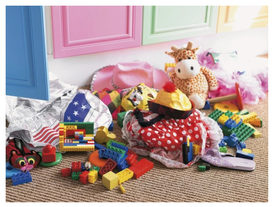 A friend and I were chatting over coffee recently – a mix of giggles and moans as we gushed on the amusements and perplexities of life with kids. My friend had been expressing frustration about trying to get her children to clean their bedrooms. She shared with me that she would ask them to tidy their rooms, even provide specific directions as to what needed to be tidied, and yet return later only to find them playing in their rooms with no amount of tidying completed! My friend expressed exasperation and admitted to being unsure of how to proceed. As I had sat listening to my friend describe her dilemma, a sudden rush of self-awareness swept over me. I too have experienced frustration when my children were requested to tidy their rooms and instead found themselves distracted in the process. I too have found myself curiously wondering how on earth I can motivate them. I too have berated myself for cutting to the chase and cleaning their rooms myself. Despite these acknowledgements, the realization I had was more powerful: it had to do with the way I carry out my own chores and obligations. All too often when it is time to prepare dinner, I wander into the kitchen and see dirty dishes in the sink. Well, I can not start dinner with dirty dishes hanging around – so I wash them. As I am washing them, I realize that the dish towel is dirty. I walk to the laundry room with it so that I will remember to put it in with the next load. As I am there, I realize that my cat is laying in the window, bathing in the sun. I take a moment just to stare at him – so peaceful, so comfortable. Then, I walk over to him and pet his soft fur. As I am petting him, I realize that I should probably feed him. So, I go get the can of food, and scoop some into his dish. Then I think I should feed the dog, too. I grab the dog’s bag of food, and feed her. My dog happily lops over to me, and I sit on the step to scratch her behind the ears. I smile as I contemplate how loving my pets are. Then suddenly I remember that I was going to prepare dinner! I quickly walk to the kitchen and start taking items from the fridge. As I am doing so, I see a few leftovers that have remained a little too long in the fridge. Of course they must be thrown out. I start pulling them out of the fridge, and dump some of the leftovers into the compost bucket. Ahhh… it is almost full. I should take it out. I am about to put my shoes on, when I remember that I am actually in the middle of making dinner… ! So I have to ask: how often are we guilty of the very same behaviours we are scolding our children for? “Everything that irritates us about others can lead us to an understanding of ourselves.” What I needed in my moment of distraction wasn’t someone yelling at me. I needed to gently remind myself to get back on track. I even smiled at myself, giggling at how easily I was getting everything else accomplished aside from the task at hand! That too is how I need to approach my children. Not with frustration, not with exasperation – but with gentle encouragement.
Depending on the developmental level of our children, they are likely struggling with their own impulsivity. I read once that our ability to control our impulses isn’t fully developed until age 24 (sorry, I don’t have a reference for this, it is simply something I read once that stuck with me). And, because our impulses are related to root drives, we tend to experience heighten impulsivity when we feel hungry, tired, hurt, and anxious. If that is the case, shouldn’t we be even gentler on ourselves and our children? Additional ways to encourage and motivate children with their chores:
This article was originally posted on March 11 2013, to Happy Parents = Happy Kids (focusedonparenting.wordpress.com) by Susan Guttridge 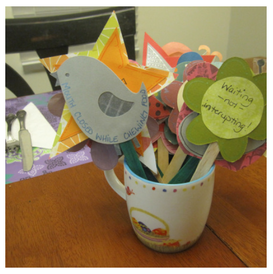 I love dinner time with my family. It is such a great opportunity to hear about everyone’s day, to joke with each other – to basically connect with each other after being apart all day. However, loving the opportunity to connect doesn’t necessarily mean that dinner time is always easy! More often than not, my children want to show me what their day was like: they want to act out what each person did, or demonstrate dance moves. They are constantly popping up and down from the table to get things or to do things, and they are excited so they are constantly interrupting others. So, we decided to try out an innovative idea that Jo Frost taught, on the tv show Super Nanny. It is so simply: write down the rules for meal time on paper flowers, place the flowers on the table at meal time, review with everyone as necessary. It was fun writing down the rules with my children. I loved hearing their interpretation of our meal time rules! For example, my 8 year old came up with“don’t show people what’s in your mouth by talking when you are chewing”. And my future scientist 3 year old came up with “don’t mix your food into your drink”! It took a few revisions, but eventually we came up with about 6 meal time rules, phrased in positive terms (For example, rather than “don’t show people the food in your mouth by talking when you are chewing”, we came up with “Finish chewing, then talk”). The trick to this strategy? You must catch your kids following the rules! Remind them of the rules at each meal time, verbally acknowledge they are doing it (some praise), and give them the appropriate flower. My children love the pretty flowers we made –they are proud of their hard work. So, at meal times now, they point out their good behaviour and ask for a flower. They even notice each other’s good behaviour and point out that someone needs a flower if I have missed it! I wonder if the key to success for this strategy was that my children partially own it – there is some empowerment here because they were a part of outlining the rules and creating the flowers. Thank you Super Nanny! This article was originally posted on January 5 2013, to Happy Parents = Happy Kids (focusedonparenting.wordpress.com) by Susan Guttridge 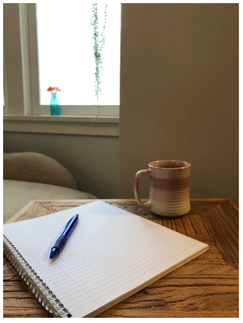 Let’s be honest: parenting just might be one of the hardest job you will ever have. It will also be the most rewarding, the most wonderful, the most awe-inspiring make-you-want-to-be-the-best-possible-you-ever job. Here is a strategy to help you through those moments when the worry and concern threaten to overtake the positive. This strategy can help enhance your self-awareness, personal growth, and provide an element of control over to shift emotion and build self-worth. Here it is: Take all those thoughts swimming around in your head, and put them down on paper. Write them, type them, scribble them, paint them, blur them, or doodle them. The important step in the process is simply getting your thoughts out on paper. You might be doubting your parenting skills; you might be questioning your actions and reactions; you might be confused by your child’s behaviours; you might even be comparing yourself to others and feeling as though you don’t measure up. These thoughts can be over-whelming. When you put them down on paper, they suddenly seem concrete – tangible. You can make sense of them because they are words on paper and not thoughts triggering emotions and stirring up memories. You might find that you can think more clearly. You can even start problem-solving your way through them. “Writing about an experience can help you distance yourself from the feelings of inadequacy that get in the way of enjoying the just-as-real joys of parenting.” “Writing about important personal experiences in an emotional way… brings about improvements in mental and physical health” – J.W. Pennebaker & J. D. Seagal Not sure how to write in a journal? Here are some suggestions:
Worth Checking Out: The on-line store Knock Knock sells a very clever journal for parents titled “I’m a Parent?”. The journal itself starts out with an informative overview of parental guilt and the benefits of journaling. Then, every journal page starts with the caption “Why I’m a less-than-perfect parent today:” and ends with the affirmative statement “You’re doing better than you think”. Resources: Writing Down the Bones, by Natalie Goldberg (2005) Yoga for your Brain, by Sandy Steen Bartholomew (2011) Forming a Story: the Health Benefits of Narrative, by J.W. Pennebaker & J. D. Seagal (1999) Department of Psychology, University of Texas at Austin, USA. This article was originally posted on September 26, 2012, to Happy Parents = Happy Kids (focusedonparenting.wordpress.com) by Susan Guttridge “Judgments prevent us from seeing the good that lies beyond appearances.” — Wayne Dyer  Children have beautiful intentions. As adults, it can be very easy to lose sight of these intentions. We can get caught up in our day at work, in our household chores, in bills that need to be paid, in family issues, and in our own (sometimes unresolved) experiences. When we are “stuck in our heads” we lose sight of the present moment. For example, we interpret our children as being messy when they are actually being creative, or as getting in our way when they are trying to be helpful. A very poignant example of this very notion was shared with me recently while working with a 66 year old woman (I will refer to her as Jen in order to protect her privacy). Jen described to me a story of when she was young – just 6 years old. She told me that her mother had the most beautiful flowers growing in the garden. Jen would love to sit among the flowers, most of which were taller than she was when she sat. As she sat by the flowers, she would imagine herself living in a field all of flowers. The image was calming and safe for her, and she would spend hours sitting among the flowers. One summer day, Jen’s mother had been cleaning the house and Jen had wanted to help. She saw her mother working hard and noticed how beautiful the house was becoming. Jen described offering to help her mother, but that her mother had been too busy to attend her. Still full of admiration for her mother and wanting to help, Jen went out into the garden, and selected a few of her favorite flowers – thinking of how lovely they would look on the kitchen table. Jen pulled the flowers and brought them into the house. She found a vase and began filling it with water. At that moment, Jen’s mother entered the room: her mother noticed only the plucked flowers, root and all, and a clump of dirt muddying her freshly washed floor. Jen was in trouble and the flowers were thrown in the trash. Jen’s beautiful intention to help her mother went unnoticed. What an impact this mother’s actions had on her young daughter – so much so in fact, that at age 66 Jen recalls every detail of the experience and it still brings tears to her eyes. Our children have beautiful intentions. Depending on their age, they might not know fully how to help. For example, Jen did not know she needed to cut the flowers and leave the root in the ground – her intention was solely to help. Consider the intentions behind your children’s action – and attend to the intention. Then teach the appropriate behaviour. Grasp hold of the teachable moment and use it to bolster your child’s self-esteem. Use the comments to share any of your examples of when you been successful at noticing the intention in your children’s behaviour. “If you judge people, you have no time to love them” This article was originally posted on July 31 2012, to Happy Parents = Happy Kids (focusedonparenting.wordpress.com) by Susan Guttridge
Tonight was my daughter’s first school dance. It was a fabulous evening: She danced with friends, she watched the band, she ate pizza, and she decorated herself with glow sticks! She had wanted to stay right until the very end, which meant that we didn’t pull into our drive-way until after 8pm. Once home, I found myself rushing her through the steps of her bedtime routine. She was up past her bedtime and looked very tired! I noticed that the more she dawdled, the more my frustration mounted. There were so many chores I needed to finish up before I could relax for the evening, and the more I mentally rehearsed the list, the more frustrated I found myself becoming.
And there is where I had to pause. My self-talk wasn’t matching my over-arching values when it comes to raising children. I don’t want to be the grouchy parent. I want to be present (physically and emotionally). My daughter was on an adrenaline high from dancing with her friends; she wanted to dance around her room and tell me about her evening! I want my daughter to know that she can approach me about anything, no matter the time of day. That is one of my parenting goals. But, when I was feeling frustrated this evening, and rushing my daughter to bed, and getting short in my communication, was I really doing justice to that goal? Was my behaviour helping our relationship at all? I don’t think so. I sat back on the edge of her bed, and took a pause. I took some deep breaths. I took in the beauty of her smile and her after-glow from dancing. In the grand scheme of things, what mattered most was sharing this moment with my daughter, laughing with her, and just enjoying her company. Just STOP is exactly the strategy that I would like to share with you. Sometimes we need to stop the thoughts that escalate our negative feelings and fuel our inappropriate reactions. Try visualizing an actual stop sign. This is a great technique because we are so conditioned to stop when we see a stop sign (or at least slow to a “rolling stop”…ha ha!). But the point is this: whenever we see a stop sign, we come to a stop and cautiously look around. In your parenting and in your day-to-day life, when you notice frustration or anger building up inside, follow those exact same rules. Stop and cautiously look around (inwardly): tune in to what you are saying to yourself. If your inner voice is negative, if you are making accusations, ascribing malicious intentions to your child, if you are self-downing, or engaging in self-limiting beliefs, try visualizing a stop sign. Visualize the octagon shape of it. The bright red colour. The retro-reflective lettering. And just STOP. If you have trouble with visualization, you can still use this strategy – just modify it a little! Print out a picture of a stop sign. Then, keep it with you and look at it often or as needed. Keep focusing on the stop sign, and the underlying meaning for you, until you are able to clear your mind and get centered. Our kids need us to get out of our heads and into the moment with them. Good luck! Idea From: The Affect Regulation Toolbox, by Carolyn Daitch (2007) This article was originally posted on April 15, 2011, to Happy Parents = Happy Kids (focusedonparenting.wordpress.com) by Susan Guttridge This morning I was running late for work. Last night, rather than tidying and preparing lunches for school, I was tired. I decided to put my feet up: I watched tv, and I chatted with my husband. Shirking the evening household responsibilities felt great! But as a result, this morning I was running late. My morning agenda read: get ready, get kids ready, get lunches ready, drive kids to school, drive self to work. However, my six year old daughter had a different agenda. Despite the many times I informed her that I was running late and that we needed to get out the door, she dawdled.
The reality is, I was frustrated with myself for not being prepared for the morning – and sadly I found myself directing this frustration at my daughter. As I saw myself nagging ineffectively, I noticed my inner dialog also changing: “Why can’t she just help me with this? She is so disrespectful…”. Funny thing about such negative, labeling comments – they seem to always intensify angry feelings. Researchers McKay and Fanning (1996), call these ‘trigger thoughts’ because the thoughts tend to trigger in us negative emotions. When parents are stressed, thinking thoughts that serve to magnify, label, and assume intent distort the situation – these thoughts make the situation seem worse than it is, and make your child’s behaviour seem deliberate and bad. Trigger thoughts lead parents to forget the real reasons behind their child’s behaviour (such as developmental level, reinforcement history, needs, temperament, and so forth). And, as the trigger thoughts spiral us into anger, we are left feeling helpless. Once we cool down and the situation is over, we are still left with an unresolved issue and have now lost an opportunity to problem solve with our child(ren). Trigger thoughts also have a negative impact on our kids. When our anger prevents us from seeing a situation clearly and acknowledging underlying causes of behaviour, we send negative messages to our children. These messages can lead kids to see themselves as bad, to grow less cooperative with us, and to become alienated from us and angry. The impact of chronic anger on our children sure is worth our attention in changing our patterns when under stress! McKay and Fanning, in their 1996 research study, found that parents with low levels of anger tended to use more positive coping statements (in place of trigger thoughts). The seven coping thoughts that seemed most effective were as follows:
These are such fantastic coping statements and parents so often forget to use them. If you need assistance in remembering to use the positive coping statements, you could post them on your wall, or use the sticky dot technique! If these coping strategies don’t fit for your situation, spend some time creating your own. The more the coping statements are unique to your life, the more likely you are to remember to think them in the pace of trigger thoughts. Most importantly, start becoming aware of how you feel anger in your body. Then, when you feel that sensation, check in with what is going on for you at that moment. What are you saying to yourself about the situation? Are you labeling your child in a detrimental way? Is that problem suddenly feeling magnified? Are you assuming some unruly motive to your child? If so, you are most likely using a triggering thought. Swap it out with a coping statement– and believe the coping statement. Our children really aren’t out to get us! They are just navigating their way through some significant developmental milestones and often feeling helpless, powerless, frustrated, anger, etc. at the process! Reference: McKay, M., & Fanning, P. (1996). When anger hurts your kids: A parent’s guide. Oakland, CA: New Harbinger Publications, Inc. This article was originally posted on January 24, 2011, to Happy Parents = Happy Kids (focusedonparenting.wordpress.com) by Susan Guttridge This article was originally posted on November 16, 2010, to Happy Parents = Happy Kids (focusedonparenting.wordpress.com) by Susan Guttridge 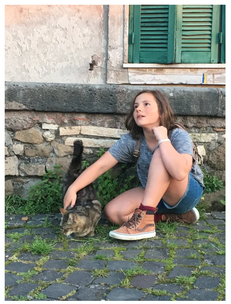 Raising kids can bring out both the best and the worst in parents. After a challenging day, it might be easier to connect with all the things you’re doing wrong – I know I’ve had days like that! Perhaps it’s about having more energy, more patience, handling our temper, or not feeling quite so emotionally over-whelmed. Recognizing our limitations can often be easier than identifying how to create change, committing ourselves to a plan, and sticking with it. One of the greatest ways to successfully change a behaviour is to document it. We can do this through journaling, or by writing out a plan for ourselves. Committing our thoughts to paper somehow makes them more concrete. No longer are they fleeting words floating through our mind – on paper words take on a stronger meaning. They become real. Through writing we give order to our thoughts, which assists us in seeing a plan more clearly. So, to become accountable to yourself, every night write in your journal the ways in which you were successful in carrying out your desired behaviour change. Example: Becoming Accountable with Anger
Example: Becoming Accountable with Self-Esteem
Journaling in this way will make you accountable to yourself. It doesn’t feel very good to sit down to do this journaling exercise and have nothing to say – which is the success of the technique: You will want to implement the behaviour you planned so that you have something positive to write about in your journal! This article was originally posted on November 1, 2010, to Happy Parents = Happy Kids (focusedonparenting.wordpress.com) by Susan Guttridge  This summer, my 6 year old daughter told me that I was a ‘no parent’. When I asked her what she meant, she told me that I say “no” all the time. Could this have been true? I was quite sure that I was a balanced parent – with an equal share of “yes’s” and “no’s”! However, because my daughter was quite adamant that I was in fact a ‘no parent’, I decided to check it out for myself. To keep track and deepen my self-awareness, I used an index card, with the word ‘no’ on one side and ‘yes’ on the other. What the process did for me was increase my self-awareness. Was my ‘no’ response simply a knee-jerk reaction, or was there a good reason for me to say ‘no’ to my daughter’s request? By the end of the day, I realized that I was in fact a very balanced parent, and the score card opened up a great dialog between my daughter and I about expectations. If you would like to increase self-awareness about a particular behaviour, try using the score card technique! It doesn’t have to just be used to increase awareness of ‘yes/no’ responses. If you are learning to better handle your anger, keep score on when you handle anger well (staying calm), and when you lose your cool. You can then use the score card to better understand what is going on for you when you are able to stay calm in the face of frustration – and hopefully learn to build on these moments! What helps you to stay present, to pause before responding? Type your ideas to the comments and let’s all learn from each other. Good luck! |
AuthorSusan Guttridge is a trauma-informed Master level Counsellor with the clinical designation of Canadian Certified Counsellor (CCPA). She has 20+ years experience providing individual and group therapy. Archives
January 2024
Categories
All
|

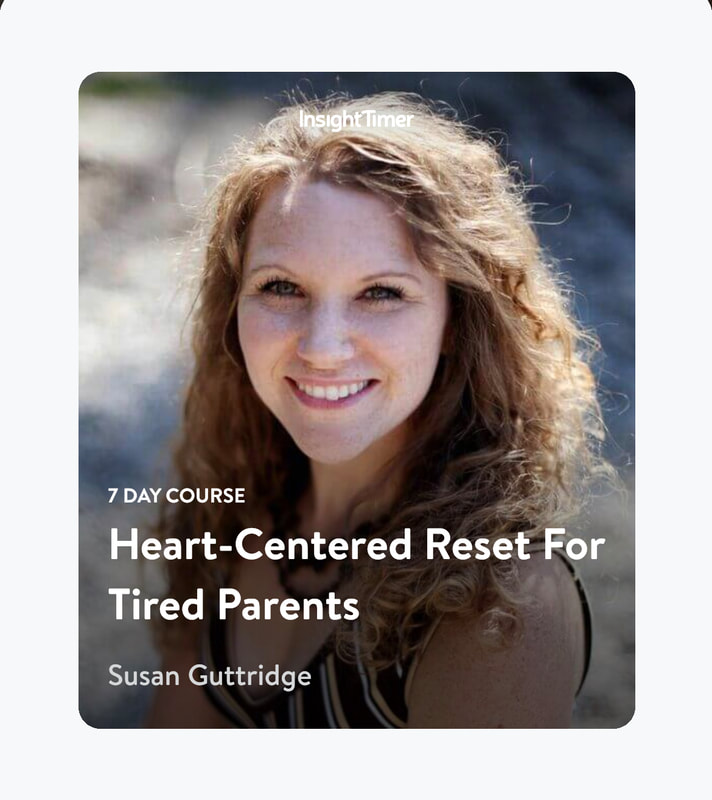
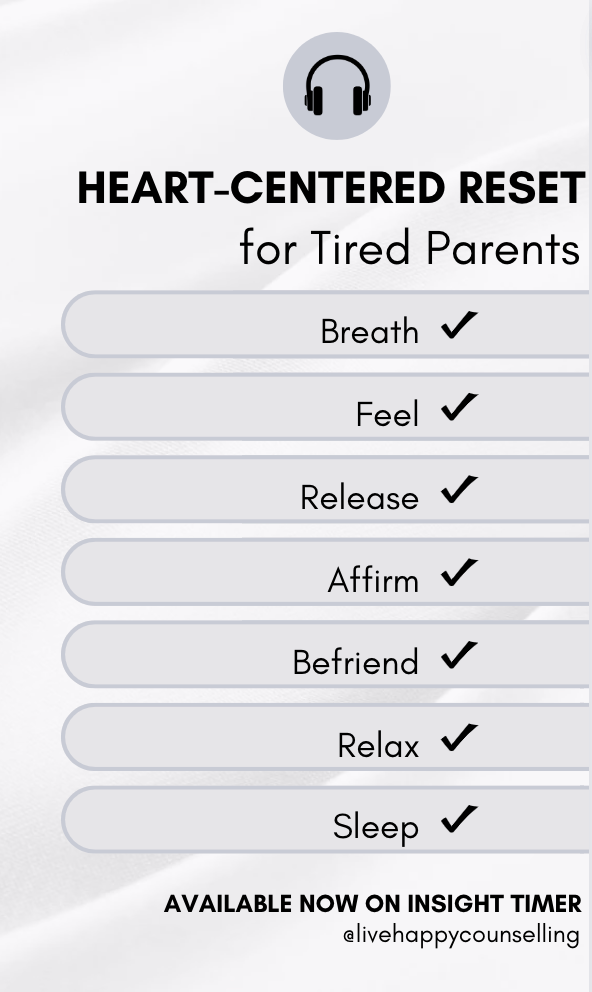

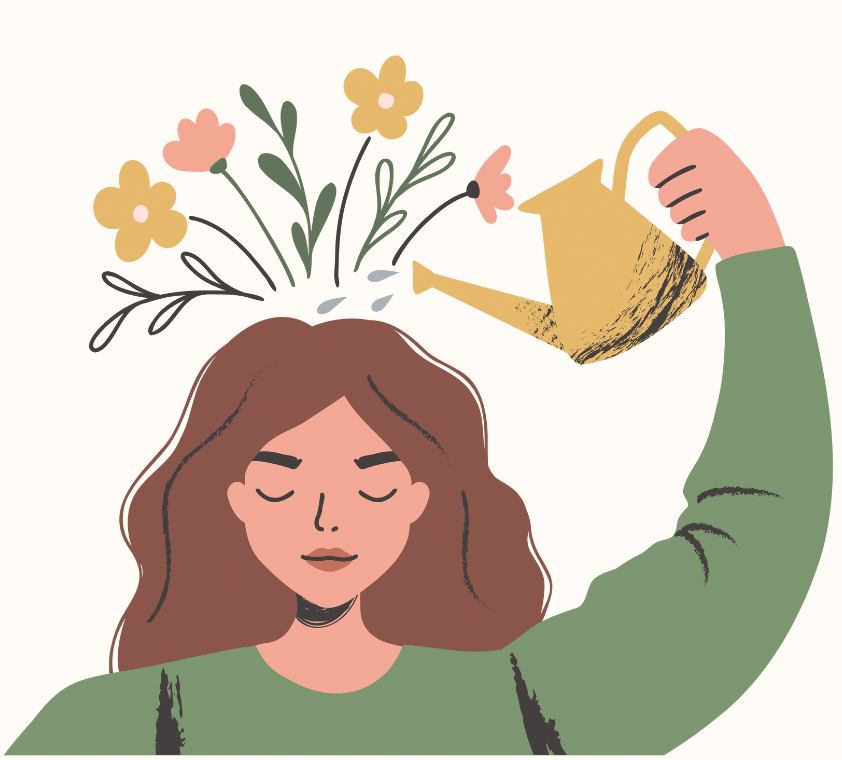
 RSS Feed
RSS Feed